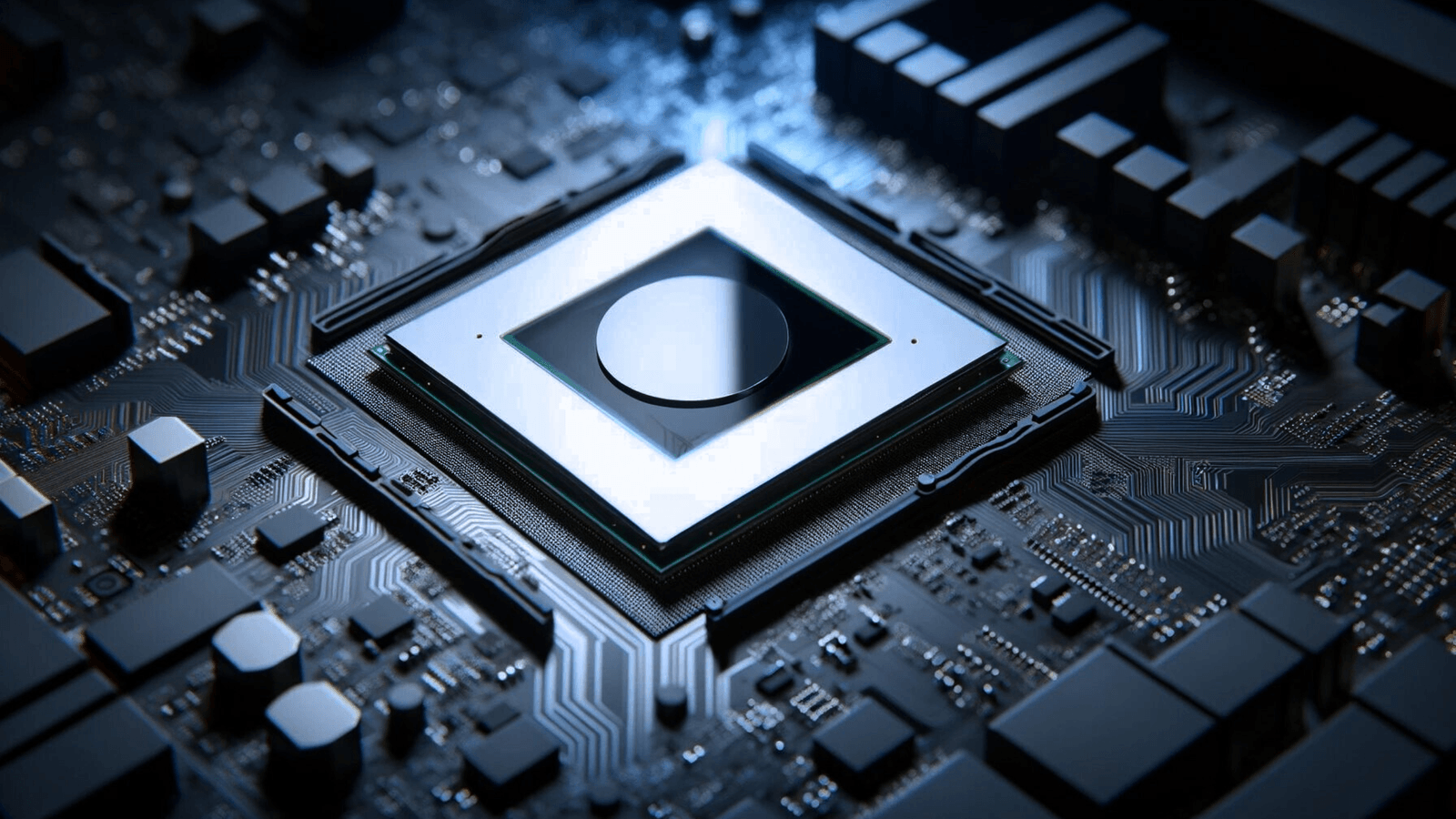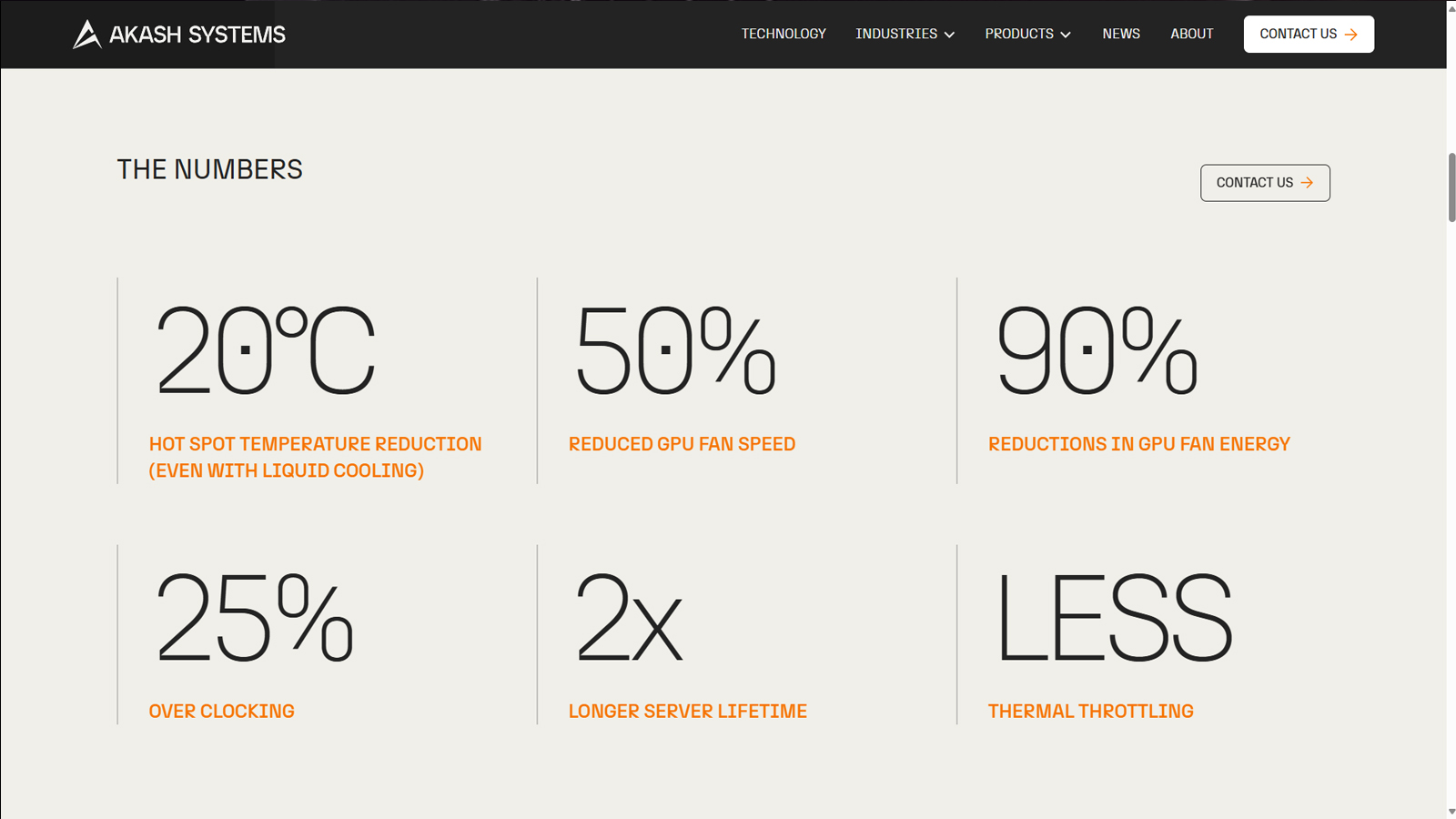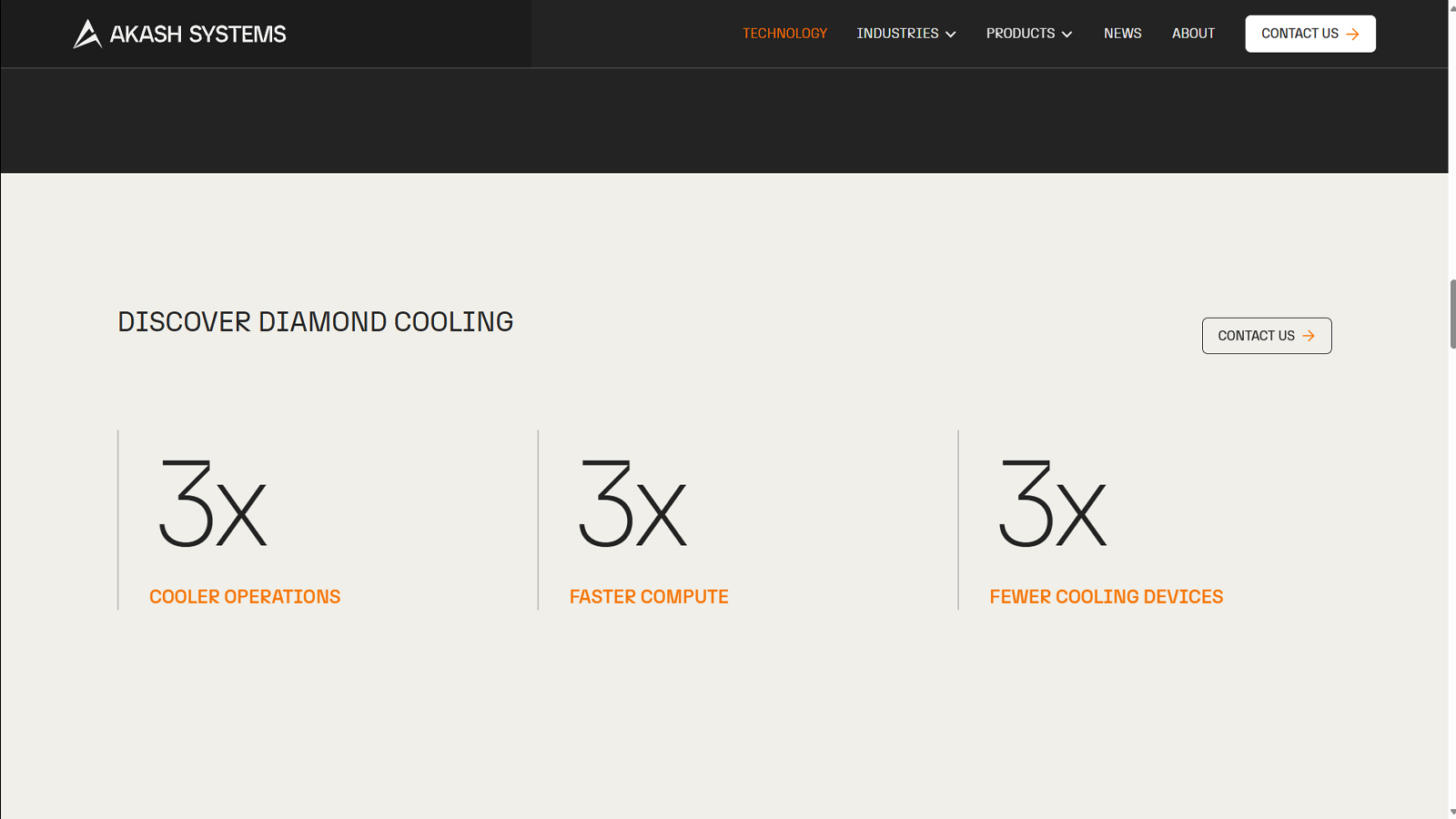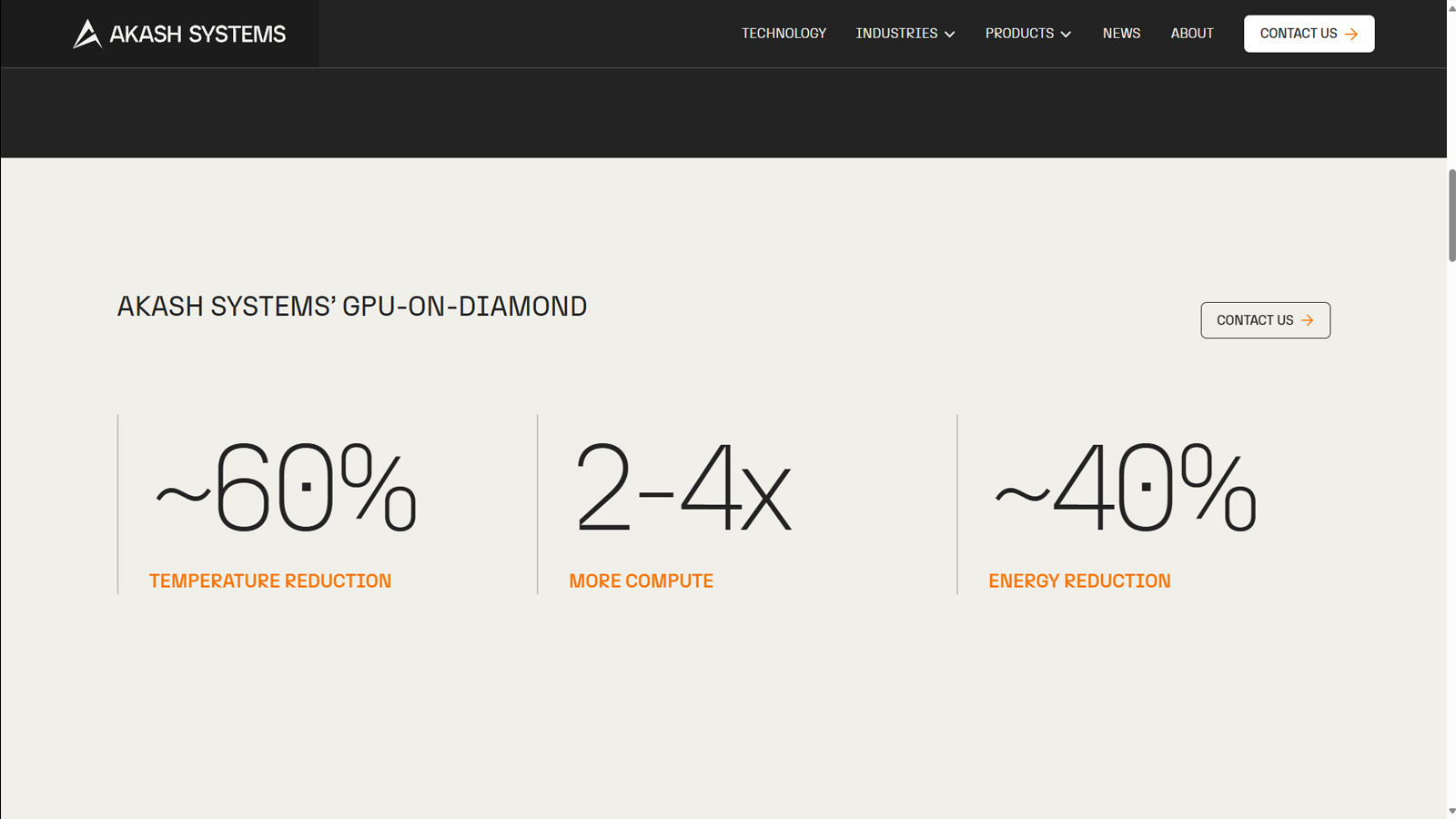Diamond-cooled GPUs are coming soon — startup claims 20C temp reduction, 25% more overclocking headroom as it seeks US govt funding for diamond-encrusted cooling solutions
CHIPS Act helps with $18.2 million in direct funding and $50 million in federal and state tax credits.

Akash Systems will use CHIPS Act funds to produce diamond-cooled semiconductors for AI, data centers, space applications, and defense markets — a valuable new twist in technology.
Akash Systems has signed a non-binding preliminary memorandum of terms with the U.S. Department of Commerce for $18.2 million in direct funding and $50 million in federal and state tax credits through the CHIPS Act (h/t Axios). Although this isn’t yet a binding contract that will give the company the promised funds, it’s an important first step in the negotiation process for the Oakland-based startup, which shows that both the company and the U.S. government are gradually moving towards a formal agreement.
Diamond-cooling technology goes deeper than just thermal paste with nano-diamond technology. For example, some use synthetic diamonds as the chip substrate, utilizing the material’s thermal conductivity to more efficiently move heat away from the processor. So, let's look closer at Akash's solution.
Akash does not detail exactly how its diamond cooling technology works, but it says that it has fused synthetic diamond with conductive materials like Gallium Nitride to use it as a semiconductor. So, for starters, it could be that the company buys a GPU chip from a supplier and then mounts it on its own GaN-on-diamond PCB. Thus, in the long run, the company could produce its own synthetic diamond wafers for use in chip fabrication by manufacturers like Nvidia and Qualcomm.



Akash claims its technology can reduce a GPU’s hot spot temperature by 10 to 20 degrees Celsius, saving data centers “millions of dollars in cooling costs” while preventing thermal throttling. In the GPU-on-diamond specific slide, you can also see claims of up to a 60% temperature reduction using Akash tech, for a 40% reduction in energy consumption. For now, we have to take the numbers at face value, but its claims are quite eyebrow-raising. However, the firm's tech must have passed some scrutiny from CHIPS Act officials.
Akash Systems is also working on GaN-on-Diamond tech for radios and power amplifiers for deployment in satellites that will increase reliability and speed while reducing size.
Most CHIPS Act funding recipients are tech giants—like Intel, Samsung, and TSMC—and established semiconductor companies. Unfortunately, smaller companies and tech startups aren’t often on the list, probably because of the extensive requirements even before a company could begin an application for funding.
Get Tom's Hardware's best news and in-depth reviews, straight to your inbox.
Axios says that Akash Systems has already secured $18 million from venture capitalists, but its CEO, Felix Ejeckam, says that the company applied for a CHIPS Act grant because the venture capital industry hasn’t always been supportive of semiconductor startups. “The CHIPS Act got started because [private investors] decided hardware wasn’t worthy enough to back, and the pandemic laid bare the problems with that,” Ejeckam told Axios. “Plus, the U.S. is trying to compete with countries like China that do lots of direct grants to build out their semiconductor and infrastructure sectors.”
The CHIPS and Science Act is indeed a massive investment push by Washington, D.C. to bolster the American semiconductor industry, with the country spending more money on chip fabs and related infrastructure in 2024 than the past 28 years combined. However, many chipmakers are getting the jitters with the upcoming change in U.S. administration, with the TSMC and GlobalFoundries racing to finalize applications and facilitate payouts. Even Akash Systems wants to fast track its progress as it hopes to break ground on its expansion activities before the year ends.

Jowi Morales is a tech enthusiast with years of experience working in the industry. He’s been writing with several tech publications since 2021, where he’s been interested in tech hardware and consumer electronics.
-
bit_user OMG, I can just imagine the clickbait headlines now... "Government wastes $Millions of tax payer money on diamonds".Reply
I wonder whether they'll have any problems with the fragility of the substrate or difficulty in handling it.
In the worst case scenario, it could be a graft to get the government to buy a bunch of synthetic diamond, much of which would then be resold into the jewelry supply chain. I hope that's just my imagination running wild and there's more than adequate oversight to prevent such a scheme.
If it works as well as they're saying, and is practical to use, then I'd worry that this improvement in cooling efficiency will simply result in power limits being increased further and AI burning up the planet even sooner. -
3en88 It's true that diamond is the best heat conductor but this doesn't solve the root problem which is heat generation in the silicon. It can take heat away faster sure but it's still the same amount of heat that the diamond needs to transfer to either air or water. The result is a lower temperature gradient between the silicon and the dissipating medium, a cooler chip, but if that's used to clock the chip higher then you will consume more energy and produce more heat that must be carried away. Scaling horizontally is probably more energy efficient and cheaper than a diamond cooling solution.Reply -
BearRaid The sentence "Akash does not detail exactly how its diamond cooling technology works", directly under a video titled "Akash Systems - How Our Technology Works" is pure gold. It really doesn't explain anything other than the fact that diamond conducts heat well.Reply -
bit_user Reply
You mean simply using more transistors? Nvidia has already maxed out the reticle size, which is why Blackwell is now using two compute dies. AMD has been multi-die since the previous generation (MI200). Not to mention that wafers on the latest nodes are very expensive and TSMC is now running its fabs at 100% capacity (I've not heard what their backlog is, but I'm sure its not small).3en88 said:Scaling horizontally is probably more energy efficient and cheaper than a diamond cooling solution.
A company called Cerebras is even using basically entire wafers, but the tradeoff is that they each cost $Millions, and Cerebras has nowhere near Nvidia's production volume:
https://www.tomshardware.com/tech-industry/artificial-intelligence/cerebras-launches-900000-core-125-petaflops-wafer-scale-processor-for-ai-theoretically-equivalent-to-about-62-nvidia-h100-gpus
So, obviously just using more transistors isn't really an option. That's why they're already clocked so far beyond the point of diminishing returns. -
TheHerald Reply
A 25c drop as the article claims will drop power draw a ton as well, leaving room for extra voltages / clockspeeds.3en88 said:It's true that diamond is the best heat conductor but this doesn't solve the root problem which is heat generation in the silicon. It can take heat away faster sure but it's still the same amount of heat that the diamond needs to transfer to either air or water. The result is a lower temperature gradient between the silicon and the dissipating medium, a cooler chip, but if that's used to clock the chip higher then you will consume more energy and produce more heat that must be carried away. Scaling horizontally is probably more energy efficient and cheaper than a diamond cooling solution. -
Kamen Rider Blade Reply
I can gurantee you that is what most companies would prefer to do, even if it pushes the device way out of the maximum efficiency zone.bit_user said:If it works as well as they're saying, and is practical to use, then I'd worry that this improvement in cooling efficiency will simply result in power limits being increased further and AI burning up the planet even sooner. -
Giroro Reply
I was skimming the article, and I read that line as "Akash does not know exactly how its diamond cooling technology works"BearRaid said:The sentence "Akash does not detail exactly how its diamond cooling technology works", directly under a video titled "Akash Systems - How Our Technology Works" is pure gold. It really doesn't explain anything other than the fact that diamond conducts heat well. -
JamesJones44 Reply
Power draw from the datacenter and/or cooler, but the CPU power draw should be unaffected by the cooling solution.TheHerald said:A 25c drop as the article claims will drop power draw a ton as well, leaving room for extra voltages / clockspeeds. -
TheHerald Reply
Why though, dropping temps by such an amount reduces the chips power draw as well. Or to put it better, it makes it stable at same clocks with lower voltagesJamesJones44 said:Power draw from the datacenter and/or cooler, but the CPU power draw should be unaffected by the cooling solution. -
redgarl Absolutely unnecessary...Reply
Don`t tell me that it is the only thing they could came up with...

